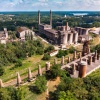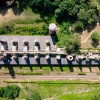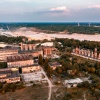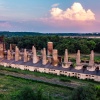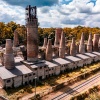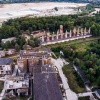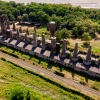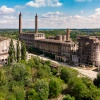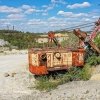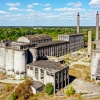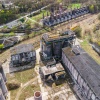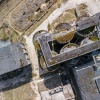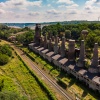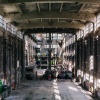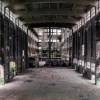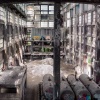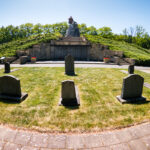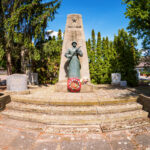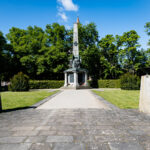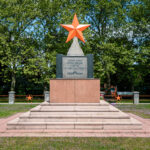Shaft Furnace Battery and World Heritage – The Rüdersdorf Museum Park
The Rüdersdorf Museum Park is home to a couple of worldwide unique witness esof industrialisation as well as limestone procession. One of them is the shaft furnace battery, a building made of 19 chimneys. The picturesque construction already was backdrop and stage of music videos, Hollywood blockbusters as well as music festivals. Aerial drone footage reveals a couple of new points of view.
Deep in the East West, where the Sun gets dusty
That’s how German singer-songwriter Herbert Grönemeyer praised the industrial soul of Bochum, a Ruhr district town. Same would be applicable for Rüdersdorf and the East of the country as well, as back in GDR times cement powder covered bus stops and other roofs; sometimes being an inch thick. Germany’s most northern mining region is my hometown and Rüdersdorf has much more on offer than the open limestone pit or construction material industry.
Since ever, even several million years ago, limestone and cement play the lead in Rüdersdorf, where a punctual layer of salt pushed the natural limestone deposits up to the Earth’s surface. Now desired limestone can be exploited at daylight and not in a 700 metres deep mine. First people coming across that phenomenon were Cistercian monks, who are even responsible for founding the Rüdersdorf settlement back in 13th century.
19 furnaces, the Cathedral of Limestone
No matter what factory, and if concrete, cement or the actual limestone, Rüdersdorf had quite some propositions for employment. Also my family was involved, even as decision makers. For example my Grandpa Erich, who passed away early, but successfully confronted plans to demolish the shaft furnace battery at the end of the 1960’s. My family has quite a hidden share in today’s star of the Museum Park. One demolition that can’t be stopped was the blasting of the five-armed Hoffmann ring furnace. At the opposite, that is southern side of the open lime stone pit stands the old electrically-operated power shovel, that once loaded the Rüdersdorf mine railway.
Opposite the shaft furnace battery one can see the old abandoned chemical plant. It’s no glyphosate plant, like rumours in the net say, but a factory for agricultural phosphates. Ships brought rock phosphates (apatite) from Kola peninsula to Rüdersdorf for hydrothermal defluoridation. In the end it became Rükana, a high quality forage phosphate being sold to the west to get foreign currency. Some of the inland vessels came from the Federal Republic of Germany, hence their sovereign was West Germany. That’s why they always got escorted by East German river police, to make sure than no one could escape into the west by such a boat.
The factory’s giant chimneys scratch at the 100 metres mark and tower high above Rüdersdorf, dominating its skyline like the wind turbines standing on the pithead stocks called Hohe Halde. Driving on near A10 motorway one can see that dominance pretty well. Background of the chimneys’ extent is the defluoridation and its waste gas, that wasn’t always white pure steam when it left the uprising metal tubes…

